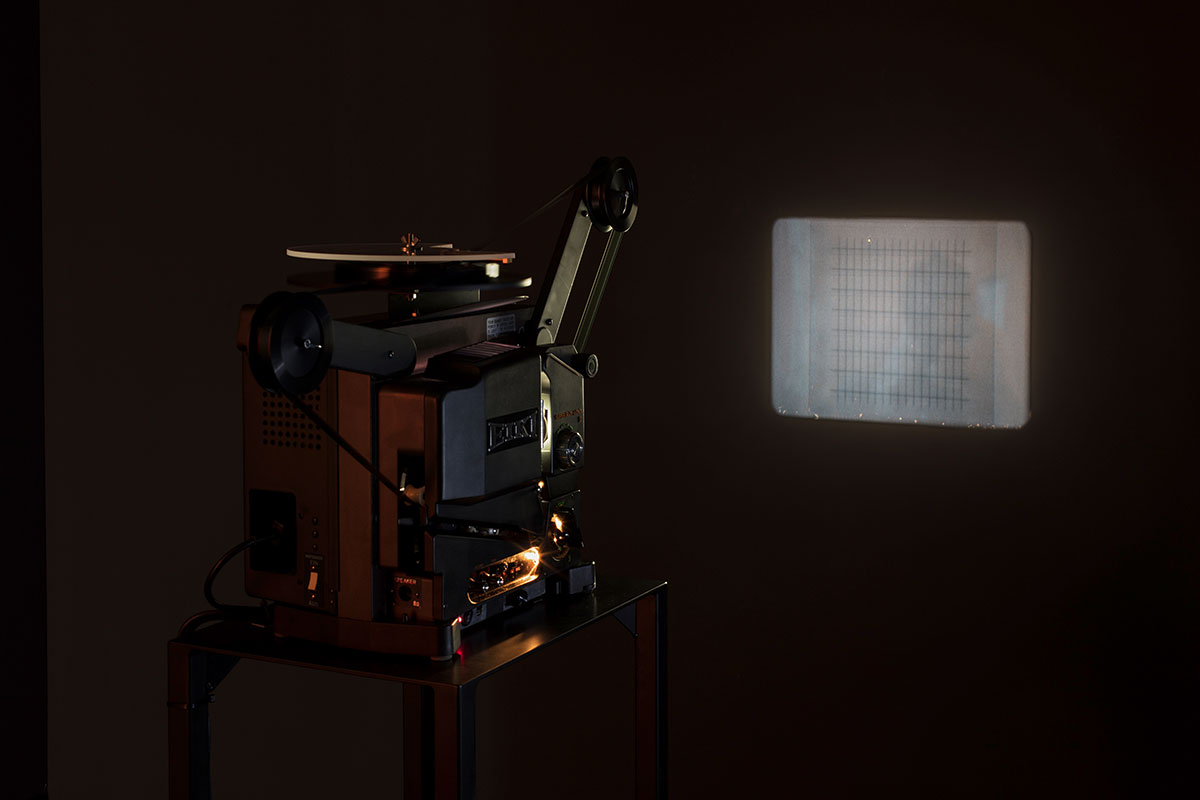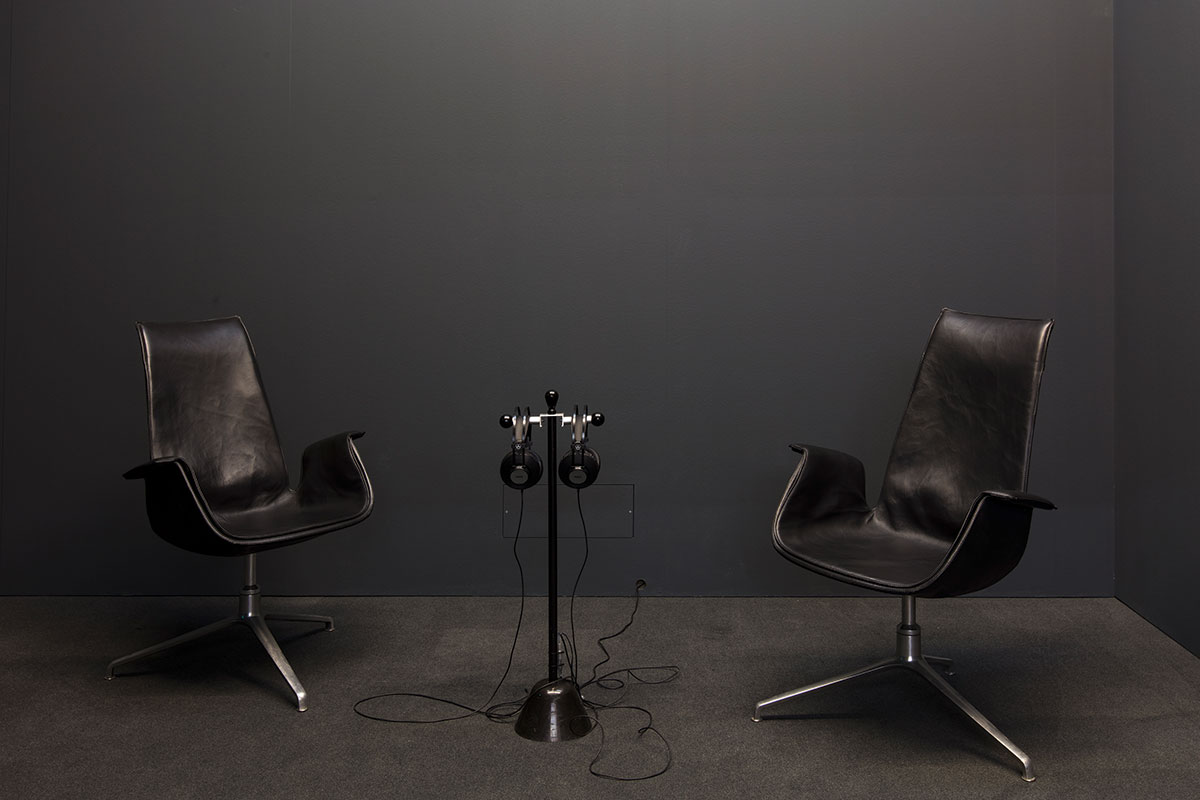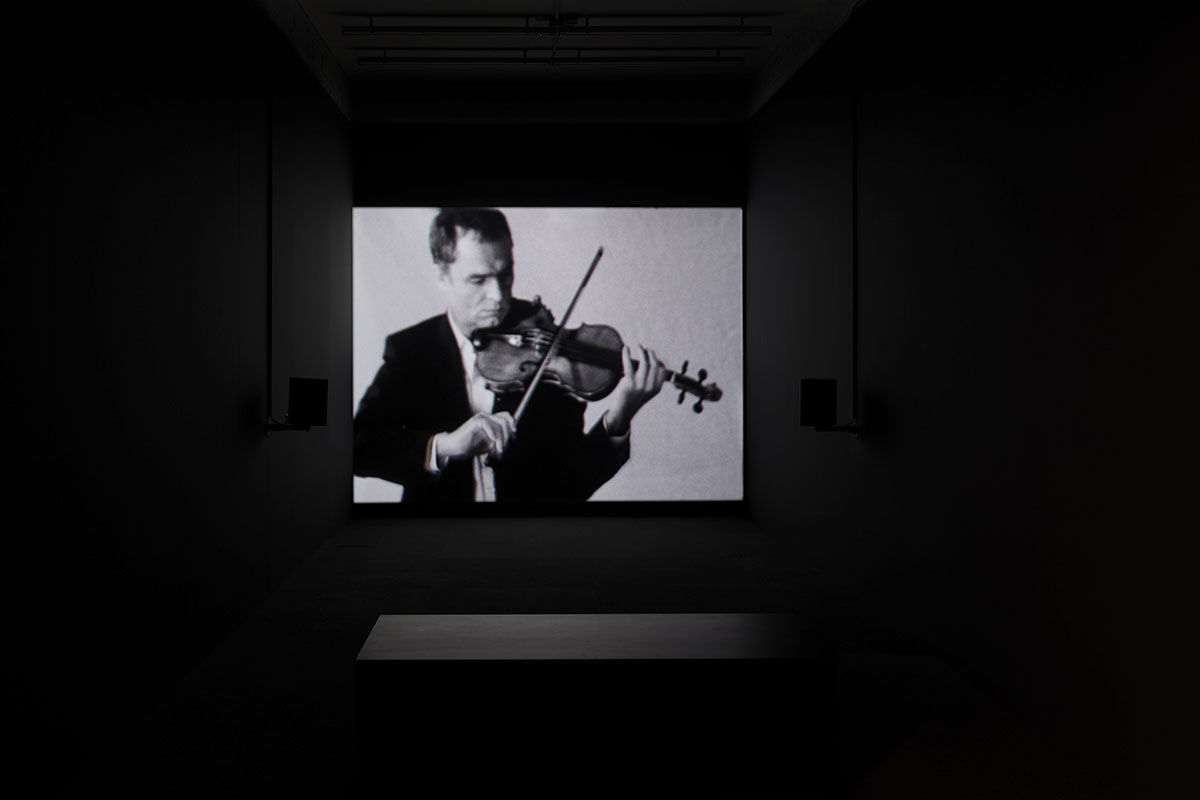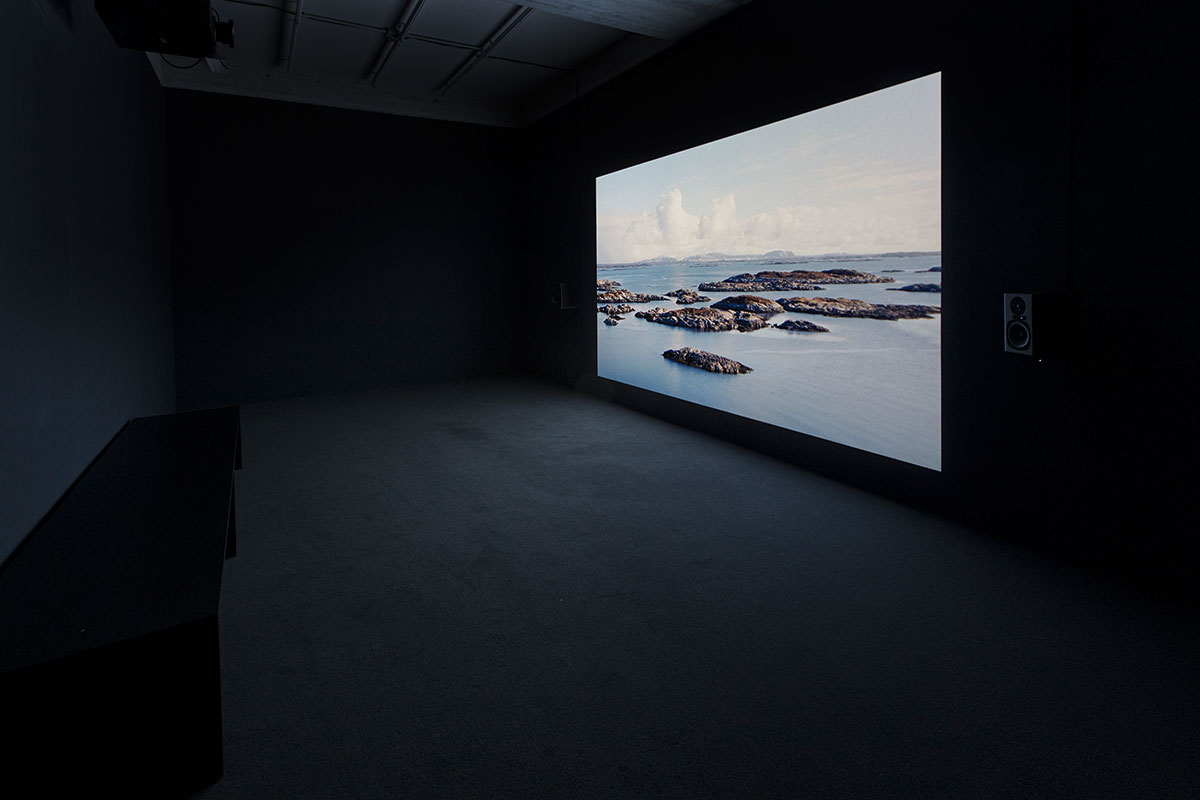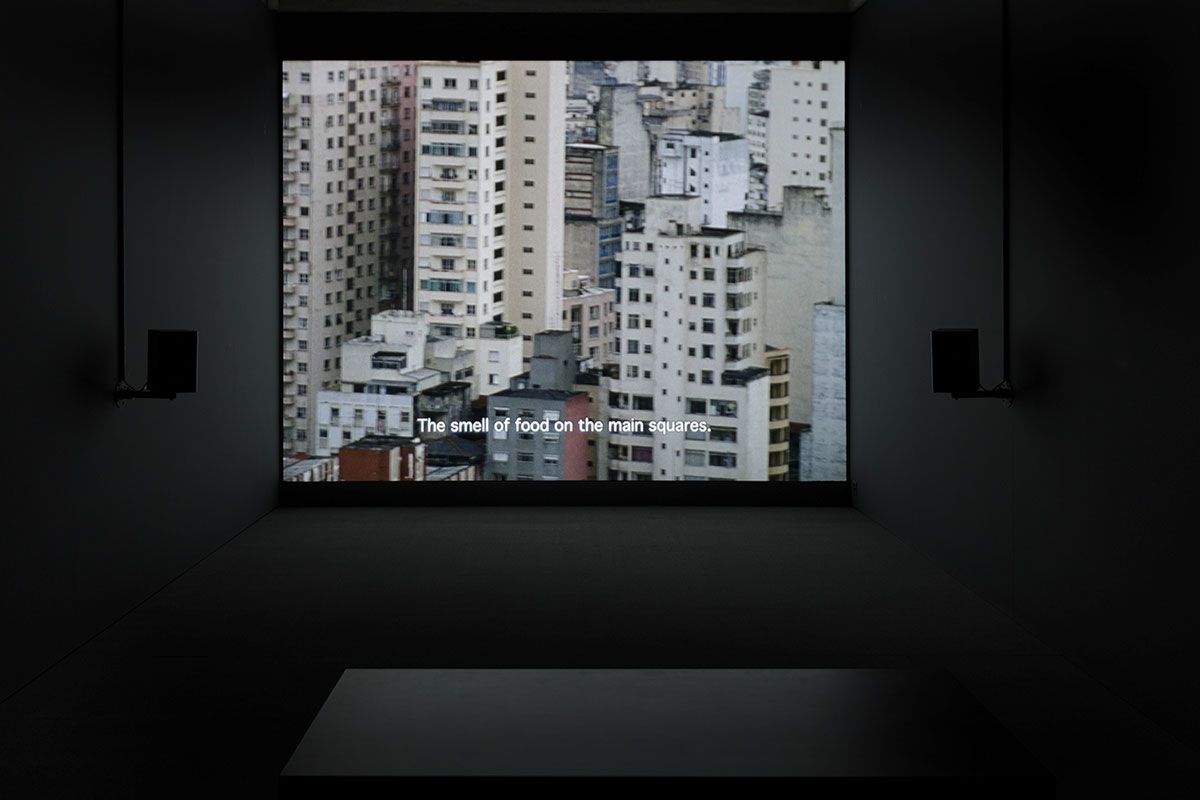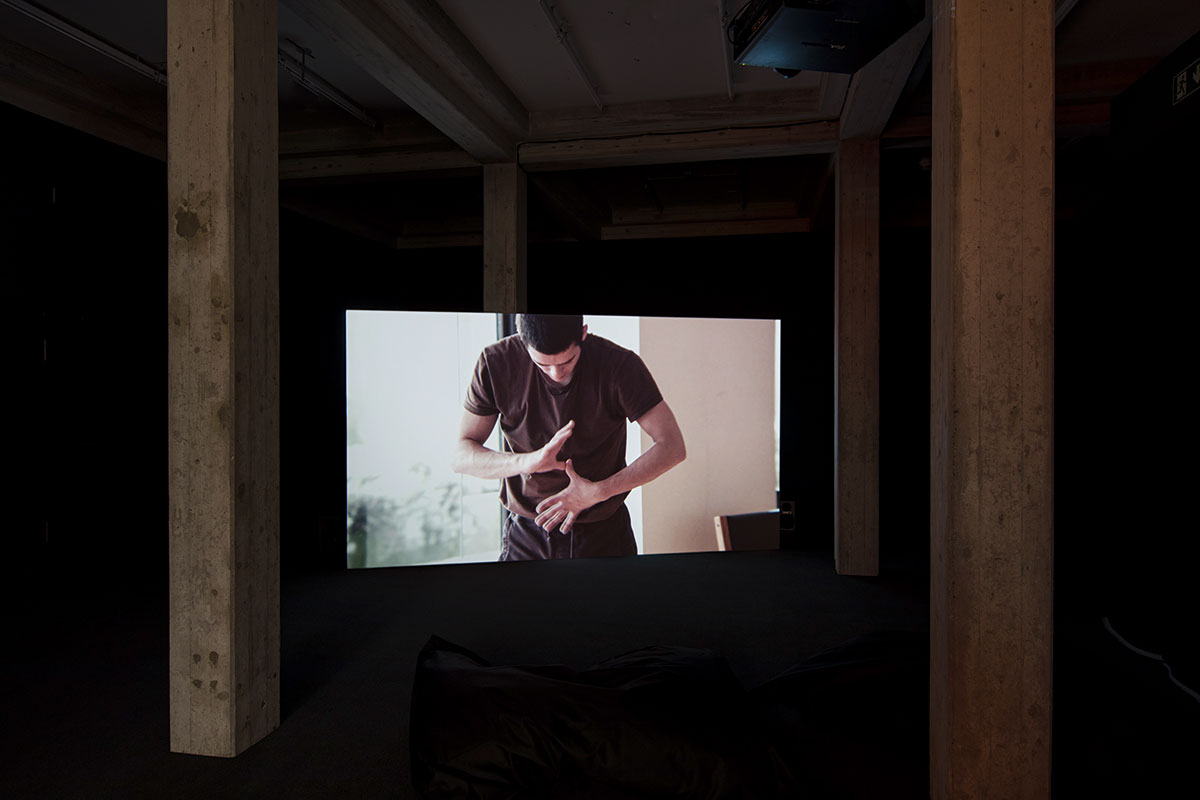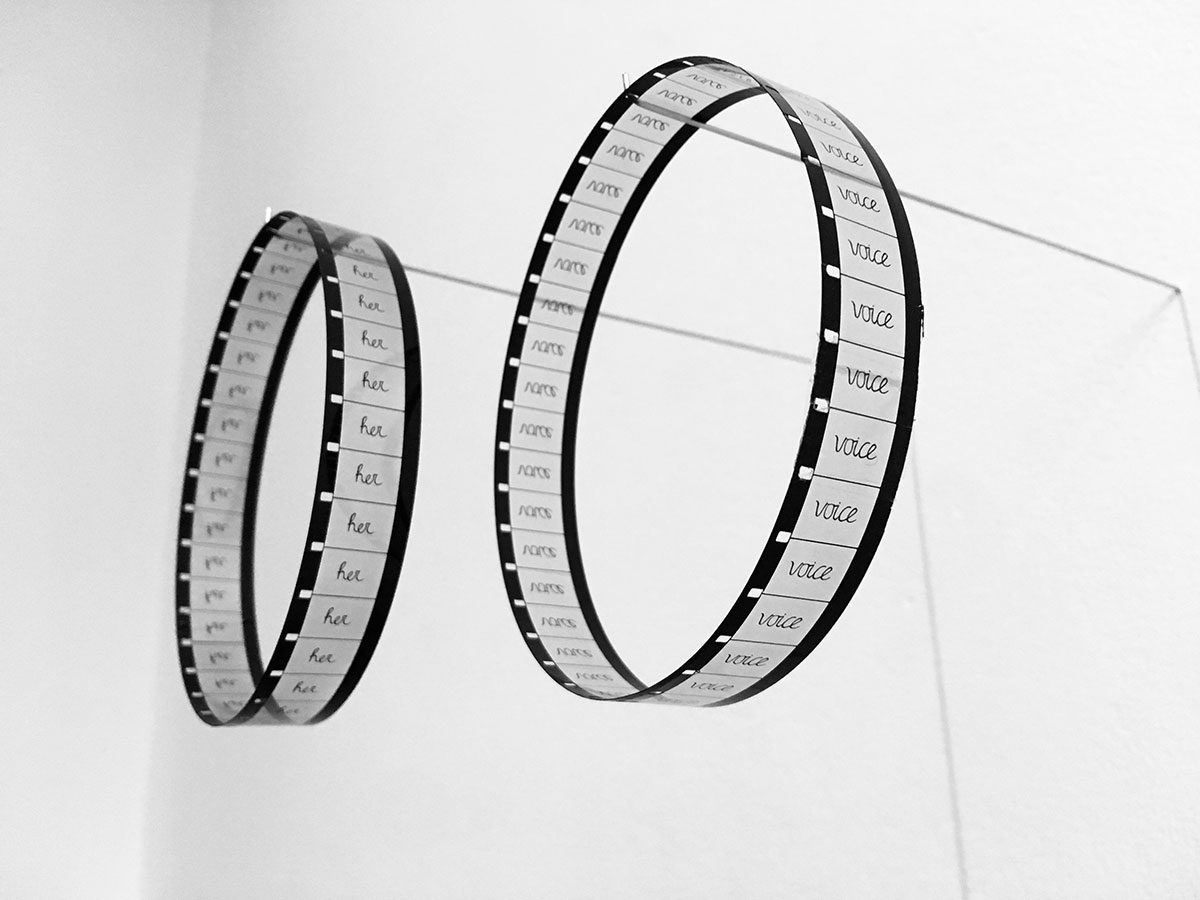PRESENTATION: Manon de Boer-Che Bella Voce
Manon de Boer works mainly in the medium of film. The perception of time and the inspiration for creative processes are central to her work, as are the conditions of the production and reception of film. People appear in de Boer’s works through their physical or sonic presence. Their gaze is directed inward, in relation to themselves. Or it is connected to others, a space, a city, or a landscape.
By Efi Michalarou
Photo: Kunstmuseum St.Gallen
As a retrospective and the most extensive solo exhibition to date in the middle of de Boer’s career, “Che bella voce” featuring sound and the human voice is particularly worth listening to. The focus on the voice expands the tension between image and sound in de Boer’s work in film. Like images, the voice is both a medium of information and an aesthetic object. In addition to the special importance of the audio track, de Boer’s work exhibits a polyphony that emphasises other people’s thinking in our own thinking and stands for the heterogeneous soundscape of a democracy. Amid the continual acceleration of society, de Boer questions the individual rhythm of a person in relation to the rhythm of society. In the film “An Experiment in Leisure”, for example, we see the slow changes in weather over a Norwegian fjord. We hear the sound of the wind and the sea and the cries of the seagulls. It is a soundscape without the noises of civilisation. Voiceover sequences feature excerpts of fellow artists speaking about moments of leisure and inspiration. In “An Experiment in Leisure”, de Boer contrasts the brisk rhythm of processes of production and consumption in capitalist society with daydreams and listening to one’s inner voice as brief moments of freedom. De Boer’s motifs always go hand in hand with the examination of the medium of film. In there are sequences in which the visual information is greatly reduced in favour of the soundtrack. For a short time, the voice or ambient noise becomes the sole source of information. She thus makes the image and the soundtrack apparent as two independent narrative threads that influence each other. “One technique that I regularly work with is the displacement of the visual image in favour of the soundtrack and/or voiceover. I’m interested in shaking up the traditional hierarchy of image and sound, exploring the disjunction between sound and image, and thus creating a tension or doubt between what you see and what you hear.” The slow cinematic shots open up spaces of experience for the viewers, allowing them to continue imagining what they have heard and seen in their own stream of consciousness. In a series of works, de Boer freezes film as a medium and thus reveals its skeleton. Her 16-mm film objects are exhibited as objects and not played as a film. De Boer thus removes the possibility of viewing the film in a linear manner. We are reminded of the need to combine 24 frames to produce one second of film. In these film objects, the passage of time becomes a material expansion and is reflected in a variety of film loops. “A Pause”, which was produced specifically for this exhibition, consists of 16-mm film in the form of a wave. The words “Breath in” are visible in the individual frames of the wave crests, and “Breath out” in the wave troughs. The approximately four-meter-long work corresponds to two breaths by the artist. The artist’s brief moment of reflection translates her breathing rhythm into a choreography in which the basic conditions of the medium meet those of human and artistic existence. In this short sequence, the artist combines the disciplines of performance, film, and visual art with the aliveness of her breathing. In Greek philosophy, the breathing process as a basic function of every organism is called pneuma and stands for the connection with the world and the ability to communicate and empathise.
De Boer’s works always contain a reflection on their own genesis. They are often inspired by other voices, such as that of Agnes Martin for the work “Untroubled Mind”. For de Boer, the thinking of others or the voice of others is on the one hand a possibility for a circular narrative. Voices such as that of the filmmaker Chantal Akerman in “For C.A. (Her Voice)”, the psychologist Marion Milner in “Experiment in Leisure”, and the civil rights activist Richard X. Clark in “Attica” remain in the present despite their death and create a parallelism of time and historical awareness. On the other hand, they are a method of marginalising singular authorship. This polyphony is particularly evident in the new work “Ghost Party (2)”. It is a co-production with the choreographer and dancer Latifa Laâbissi, consisting of a performance and a film. “Deidentification is a fundamental theme in both of our works, understood as enabling change by taking in different influences that have shaped and continue to shape our thinking, our gestures, and our existence in the world.” The two artists speak. The film includes an extensive dialogue between Laâbissi and de Boer. However, their dialogue is constructed out of statements by the writer Marguerite Duras, the film critic Serge Daney, the rapper Casey, and the anthropologist Eduardo Viveiros de Castro. At the beginning of the dialogue, Duras and Daney speak through the two artists. They talk about television from the point of view of a cinephile and the resurgence of cinematic ideas in television productions that can be negatively or sometimes positively surprising. The body and the voice are closely linked in de Boer’s work. In “Resonating Surfaces”, Suely Rolnik talks about how the history of Brazil affects the body. The displacement of the indigenous population by the colonisers, slavery, and military dictatorship is inscribed in the body as a sensitive surface. For Rolnik, her flight from the Brazilian military dictatorship to France in the 1970s was also a flight to another language. In this work she tells how she was able to leave behind the wounds of history in Portuguese and that French enabled her to communicate in a way that was not linked to the violent history of her homeland. De Boer’s exhibition brings out the nuances and richness of meaning of the voice. The voice not only transports current emotions with its timbre, but also the biography and history of the person speaking, which begins long before their own lifetime. The voice contains the achievements and failures, the privilege and oppression of previous generations. Thus the voice itself is polyphonic, and this is a focus of de Boer’s work. In the connection to the sound of the respective medium, a heterogeneous soundscape is created. It is the voice of democracy, consisting of the sound of the system and its society.
Photo: Manon de Boer, For C.A. (Her Voice), 2020, Courtesy the artist and Jan Mot
Info: Curator: Fabian Flückiger, Kunstmuseum St.Gallen, Museumstrasse 32, St. Gallen, Switzerland, Duration: 26/3-9/10/2022, Days & Hours: Tue & Thu-Sun 10:00-17:00, Wed 10:00-20:00, www.kunstmuseumsg.ch/

